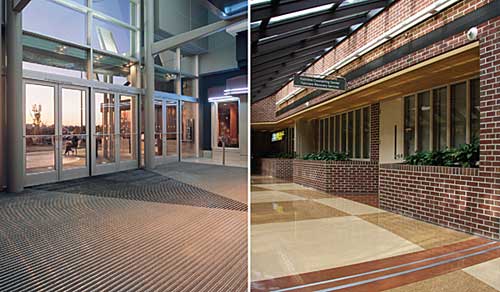Building Information Modeling (BIM) and Manufactured Complementary Building Products
THE ROLE OF MANUFACTURED, COMPLEMENTARY BUILDING PRODUCTS IN BIM MODELING
As previously noted, building product manufacturers are beginning to become increasingly involved in providing their product information as fully developed BIM objects. This is coming about for a variety of reasons including:
• Recognizing change.Manufacturers are beginning to see that BIM is quickly replacing CAD as the preferred design tool by the architectural, engineering, and construction community.
• Filling a need. The creation of libraries of specific objects is time consuming and often not cost effective for design firms, particularly for objects of multiple manufacturers. Having readymade objects that are accurate, up to date, and customizable to suit a particular project helps architects realize the full potential of BIM through greater efficiencies of time and integration of data.
• Staying current. Products change and so does BIM software. Manufacturers who are in for the long term recognize the reality of needing to keep their information and data updated with new product offerings and changes as well as maintaining full compatibility with changing software programs. Adopting and maintaining a BIM approach to conveying their product information provides manufacturers with the best way to integrate with the AEC community.
Understandably, some project owners do not allow the pre-selection of a single manufacturer, favoring instead the open bidding approach of providing the design criteria in drawings and specifications for multiple manufacturers to demonstrate compliance with. In other cases, owners have prior experience or even standing accounts for particular products and manufacturers and want to ensure that those products get used again. In either case, a discussion with the owner at the outset of a project is important to ascertain what the basis of design will be in the project regarding manufactured building products. With more product information becoming readily available in BIM format and more collaboration of designers, constructors, suppliers, and manufacturers earlier in the design and construction process, the trend is clearly heading toward making specific product selections sooner rather than later. Hence, selecting and using specific products in the overall building model would appear to be consistent with that trend.
Certain building products fit into the category of "complementary building products." The term comes from the definition of "acting as or providing a complement (something that completes the whole)." They are products or parts of buildings that are typically installed late in the stage of construction that complement or complete a portion of a building to get it to its finished functional state.
 |
Complementary building products include integrated parts of buildings such as entrance flooring and expansion joint covers. Photos courtesy of Nystrom, Inc. |
Â
These products may also be referred to as specialty or miscellaneous products, but it is likely that they are part of virtually every building being undertaken today. They include code and safety related things like roof hatches, smoke vents, access panels, and fire extinguishing equipment plus products needed to meet engineering requirements, such as air louvers and expansion joints. It can also include interior items such as floor entrance mat systems, stair nosings, and wall protection products. In the grand scheme of a building, they can often go relatively un-noticed, which may actually be the overall design intent. However, they can become a strong focus of concern when it is time to demonstrate code compliance or achieve final project close-out at the end of construction. More significantly, they are often items that building operating and maintenance personnel will use and need to find information about on a regular basis.









